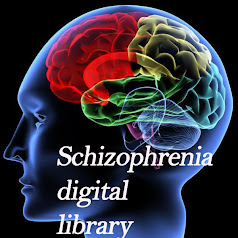
Contemporary Directions in Psychopathology: Scientific Foundations of the DSM-V and ICD-1 1, EDS: Theodore Millon PhD DSc, Robert F. Krueger PhD, Erik Simonsen MD
The Guilford Press | 2010 | ISBN: 160623532X | 622 pages | PDF | 4 MB
Un volumen que analiza y discute los mecanismos y sistemas usados para clasificar los desordenes mentales. Escrito y comentado por los expertos más destacados del ámbito internacional, entre los que se cuentan algunos directamente involucrados en la definición y desarrollo del DSM-V y el ICD-11 que son los documentos del estándar internacional para la clasificación de enfermedades mentales y desordenes de la personalidad.
This forward-thinking volume grapples with critical questions surrounding the mechanisms underlying mental disorders and the systems used for classifying them. Edited and written by leading international authorities, many of whom are actively involved with the development of DSM-V and ICD-11, the book integrates biological and psychosocial perspectives. It provides balanced analyses of such issues as the role of social context and culture in psychopathology and the pros and cons of categorical versus dimensional approaches to diagnosis. Cutting-edge diagnostic instruments and research methods are reviewed. Throughout, contributors highlight the implications of current theoretical and empirical advances for understanding real-world clinical problems and developing more effective treatments.
Contents
Part I. Historical and Cultural Perspectives
Chapter 1. A Précis of Psychopathological History 3
Theodore Millon and Erik Simonsen
Chapter 2. Themes in the Evolution of the 20th-Century DSM s 53
Roger K. Blashfield, Elizabeth Flanagan, and Kristin Raley
Chapter 3. On the Wisdom of Considering Culture and Context
in Psychopathology 72
Joseph P. Gone and Laurence J. Kirmayer
Chapter 4. Cultural Issues in the Coordination of DSM -V and ICD-11 97
Renato D. Alarcón
Chapter 5. A Sociocultural Conception of the Borderline
Personality Disorder Epidemic 111
Theodore Millon
Part II. Conceptual Issues in Classification
Chapter 6. Philosophical Issues in the Classification of Psychopathology 127
Peter Zachar and Kenneth S. Kendler
Chapter 7. Classification Considerations in Psychopathology and Personology 149
Chapter 8. Diagnostic Taxa as Open Concepts: Metatheoretical
and Statistical Questions about Reliability and Construct Validity
in the Grand Strategy of Nosological Revision 174
Paul E. Meehl
Chapter 9. Contemplations on Meehl (1986): The Territory, Paul’s Map,
and Our Progress in Psychopathology Classification
(or, the Challenge of Keeping Up with a Beacon 30 Years
Ahead of the Field) 187
Mark F. Lenzenweger
Chapter 10. Issues of Construct Validity in Psychological Diagnoses 205
Gregory T. Smith and Jessica Combs
Chapter 11. The Meaning of Comorbidity among Common Mental Disorders 223
Nicholas R. Eaton, Susan C. South, and Robert F. Krueger
Chapter 12. The Connections between Personality and Psychopathology 242
Susan C. South, Nicholas R. Eaton, and Robert F. Krueger
Chapter 13. Is It True That Mental Disorders Are So Common,
and So Commonly Co-Occur? 263
Mario Maj
Chapter 14. Taking Disorder Seriously: A Critique of Psychiatric Criteria
For Mental Disorders from the Harmful- function Perspective 275
Jerome C. Wakefield
Part III. Methodological App roaches to Categories, Dimensions,
And Prototypes
Chapter 15. On the Substantive Grounding and Clinical Utility of Categories
versus Dimensions 303
William M. Grove and Scott I. Vrieze
Chapter 16. A Short History of a Psychiatric Diagnostic Category
That Turned Out to Be a Disease 324
Roger K. Blashfield and Jared Keeley
Chapter 17. Concepts and Methods for Researching Categories
And Dimensions in Psychiatric Diagnosis 337
Helena Chmura Kraemer
Chapter 18. The Integration of Categorical and Dimensional Approaches
To Psychopathology 350
Erik Simonsen
Chapter 19. Dimensionalizing Existing Personality Disorder Categories 362
Andrew E. Skodol
Chapter 20. An Empirically Based Prototype Diagnostic System
for DSM -V and ICD-11 374
Kile M. Ortigo, Bekh Bradley, and Drew Westen
Chapter 21. The Millon Personality Spectrometer: A Tool for Personality
Spectrum Analyses, Diagnoses, and Treatments 391
Theodore Millon, Seth Grossman, and Robert Tringone
Part IV. Innovative Theoretical and Empi rical Proposals
Chapter 22. Neuroscientific Foundations of Psychopathology 419
Christopher J. Patrick and Edward M. Bernat
Chapter 23. Using Evolutionary Principles for Deducing Normal
and Abnormal Personality Patterns 453
Theodore Millon
Chapter 24. Biopsychosocial Models and Psychiatric Diagnosis 473
Joel Paris
Chapter 25. Reactivating the Psychodynamic Approach to the Classification
Of Psychopathology 483
Sidney J. Blatt and Patrick Luyten
Chapter 26. A Life Course Approach to Psychoses:
Outcome and Cultural Variation 515
Rina Dutta and Robin M. Murray
Chapter 27. The Interpersonal Nexus of Personality and Psychopathology 523
Aaron L. Pincus, Mark R. Lukowitsky, and Aidan G. C. Wright
Chapter 28. Reconceptualizing Autism Spectrum Disorders as Autism- S pecific
Learning Disabilities and Styles 553
Bryna Siegel
Chapter 29. Describing Relationship Patterns in DSM -V: A Preliminary Proposal 565
Marianne Z. Wamboldt, Steven R. H. Beach, Nadine Kaslow,
Richard Heyman, Michael First, and David Reiss
Chapter 30. On the Diversity of the Borderline Syndromes 577
Michael H. Stone
Author Index 595
Subject Index 607

Publicar un comentario